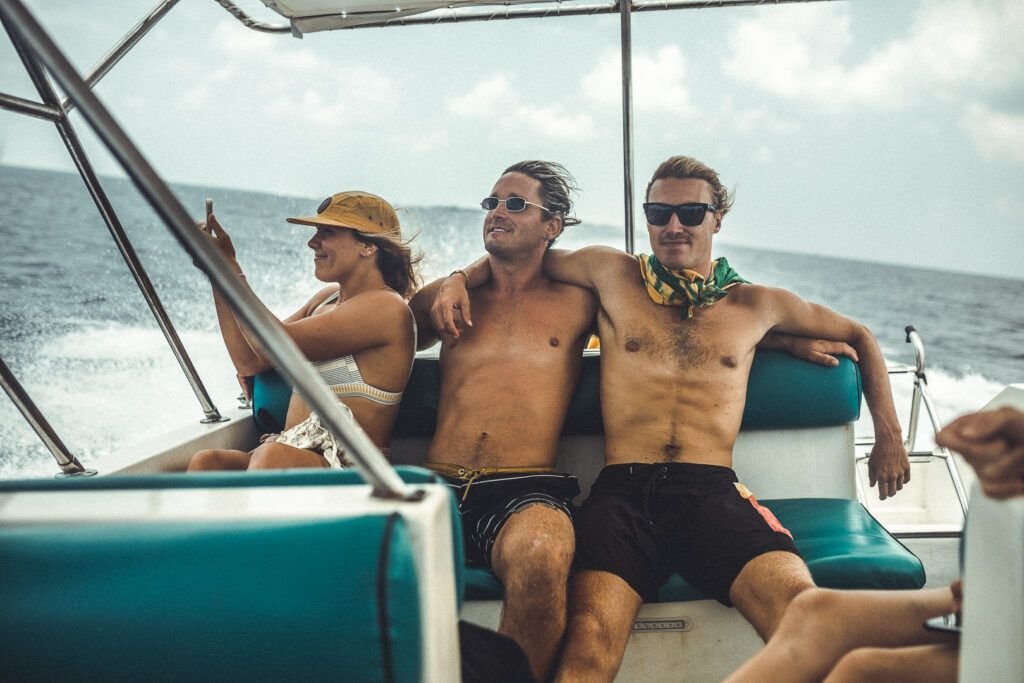SURF
We are located in Thaa Atoll, in the wave rich central atolls of Maldives.
Think warm turquoise water, palm-fringed channels and a hand-picked selection of right- and left-handers that peel like clockwork.
Veymandoo Island (Thaa, Central Maldives) sits perfectly in the swell window from the southern Indian Ocean, yet it escapes the crowds that haunt the Malé atolls.
From March to October our little slice of paradise lights up with playful, chest- to overhead-high waves that suit beginner and progressing intermediate surfers down to the ground — and when a solid pulse arrives the points step up for barrel-hungry chargers.
LIMITED GROUP NUMBERS
LOCAL SURF guides
PERSONALIZED advice
BRING YOUR PERSONAL EQUIPMENT
beginners to intermediates
The atoll we are lucky to be located in is a surfers paradise.
We’re one of the rare surf spots in the Maldives that welcomes beginners all year round – with multiple breaks perfectly suited for both beginners and more advanced surfers, there’s something here for every level, every day.
Our Breaks
While the home spots in our island works consistently throughout the surfing season, if you’re up for exploring and a bit of adventure, there are many other breaks in the central atolls. Thaa and Laamu Atolls in the central region have been increasing in popularity as surfers look to escape the northern crowds.
Although the central atolls don’t get the same kind of size as the Male Atolls, its breaks continue the Maldivian tradition of providing consistent surf and pristine barrels. Medium-sized waves are as abundant and perfect as you could ask for.
Adonis (Right) – Our home break. Long, playful wall with occasional barrel sections. Perfect for daily surfs and progression.
Mikado Outside (Right) – The punchiest wave in the area. Fast, powerful, and a bit heavier. For confident surfers.
Mikado Inside (Right) – Super fun and user-friendly. Clean lines, mellow barrels, ideal for progressing.
Finimas (Left) – Quick and hollow. A go-to for left lovers chasing tubes on the right tide.
Fonadoo Right (Right) – Easy-going and cruisy. Long mellow walls, perfect for carves and longboards.

Why surf with us?
Three brand-new twin-engine surf dhonis – jump in, zip 5-15 min to the break, chase tides or shade, and be back in time for coconut-water refuels.
Unlimited water time – stay out 2-3 h per session (or longer if your arms are still working).
Warm, laid-back vibe – local boatmen and local surf instructors who grew up in the channels,
FIND YOUR LEVEL
LEVEL 2.1 : Beginner intermediate surfer
At this stage, you have pretty good control over your paddling, are able to go out the back and catch unbroken waves and go left or right. You also understand about the waves, surfing and ocean conditions.
– Generating speed on the wave
– Improving on the wave reading ability
– Duck-diving
– Improving the stance for more mobility
– Bottom turn & top turn fundamentals
LEVEL 2.2 : Advanced intermediate surfer
At this stage, you have very good control over your board, are able to make turns to change the direction. You are also riding a short board or a mini-mal surf board.
We will focus on:
– Surfing & Speeding down the line on different type of waves
– Correct positioning to catch different types of waves
– Learning to cutback
– Technical analysis of your top turn and bottom turn
– Small floaters to pass the sections
– Duck dive improvement
If you aren’t sure what level you are, have no fear! Our instructors will assess your level once you arrive and alocate you to the correct group.
"Surfing soothes me. It's always been a kind of Zen experience for me. The ocean is so magnificent, peaceful, and awesome. The rest of the world disappears for me when I'm on a wave."
FREQUENTLY ASKED QUESTIONS
The lesson time is usually fixed the night before, making it easier for the planning. The timing depends on the best surf conditions for your level.
We suggest you bring your regular board. We have beginners and intermediates boards onsite.
We recommend you to bring surf clothing for tropics, your personal surf boards , surf wax, and a spare leash and fins.
Also a very important thing to bring, which is a bit rate on the island is good sunscreen or zinc as sun can be quite extreme here.
Almost all surf breaks in Maldives have reef. Most of it is not alive from the human action from the past. We suggest you bring reef shoes to feel more comfortable.
The surf season runs from March to October. The biggest and most consistent months are June, July, & August.
Ready for the trip of a lifetime with us?
LEARN TO SURF
THE CAMP
Find out more about our typical Maldivian island home.
PACKAGES
Check out our surf packages to find the one that suits all your needs.
